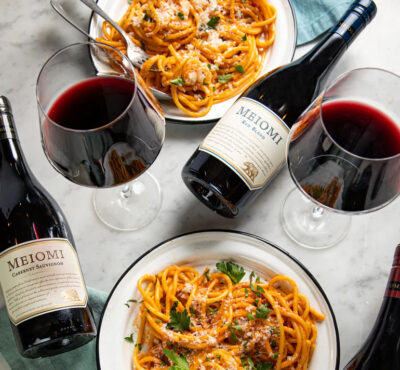How Rye Is Made
For a spirit to call itself American rye whiskey, it has to conform to a strict set of legal regulations. First, the mash (aka the starchy soup, or wort, that provides the sugars for fermentation) has to be made up of at least 51 percent actual rye grain. The bill’s remaining 49 percent usually winds up being a blend of corn, wheat or malted barley.
Second rule: Certified rye whiskey’s initial booze content can’t be any higher than 160 proof (roughly 80 percent alcohol). After all that sweet, sweet liquor has been extracted from the fermented wort, it gets diluted down to no more than 125 proof, or 62.5 percent ABV. Then the liquid gets piped into charred (meaning burnt to a crisp inside), new (meaning never before used ever) oak barrels and left untouched to age.
For straight rye whiskey, you’re looking at a minimum of two years maturation time, though many distilleries choose to let it sit around a little longer for a richer, more complex product. It’s also important to note that straight rye cannot be blended with any other spirits during this process. Pure is pure.
How Rye Tastes
Rye is known for its peppery bite, a spicy splash of flavor that washes over the palate with every sip. Some are more aggressive than others, of course, but with rye grain making up the majority of its malt bill, you’re bound to pick up at least a touch of that signature sting. That’s the primary reason why rye whiskey tends to lean more toward the savory side in contrast to corn-based liquors like bourbon, which can exude a honeyed sweetness. Just think about the difference between rye bread and corn bread, and there you have it.
Aside from that zippy edge, rye can taste all sorts of ways. Some are big and bold, with long, drawn-out finishes that leave your throat basking in a fiery warmth. Some are harsher to start but thin enough to dry right up after you swallow. Some have a slower burn as you sip, coming in smooth and gradually building in complexity, like a sneaky Thai chile. It all depends on what you like.
Once it’s ready to rock, some rye specialists, like the folks behind Vermont’s WhistlePig, opt to transfer their yield into barrels that previously housed other types of liquor, like Cognac, Armagnac, Madeira or wine, letting it soak up everything the previous occupants left behind. This method, called cask finishing, allows producers to experiment with different flavor profiles while still maintaining that straight rye certification. Also, it’s pretty dang delicious.
Where Rye Comes From
Much of the world’s rye comes from the good old US of A, with our decidedly lax northern neighbors not far behind. Once upon a time (i.e., sometime in the late 17th century), Pennsylvania and Maryland were the leading producers of this deliciously peppery whiskey. A couple hundred years later, Prohibition came along and crushed the rye business pretty much entirely, leaving only a handful of stalwart distilleries in its wake.
How to Drink Rye
One of the coolest things about all whiskeys is their innate versatility. Unlike more delicate spirits like gin or vodka, rye’s hearty grain base and lengthy aging time makes it substantial enough to drink as is. You don’t even need ice to enjoy it—in fact, most pros will tell you that if you really want to taste your tipple, lose the cubes.
Find More Interesting Posts here.
Credit:
Rye Whiskey 101
3/20/17
https://www.tastingtable.com/drinks/national/difference-between-bourbon-rye-whiskey





